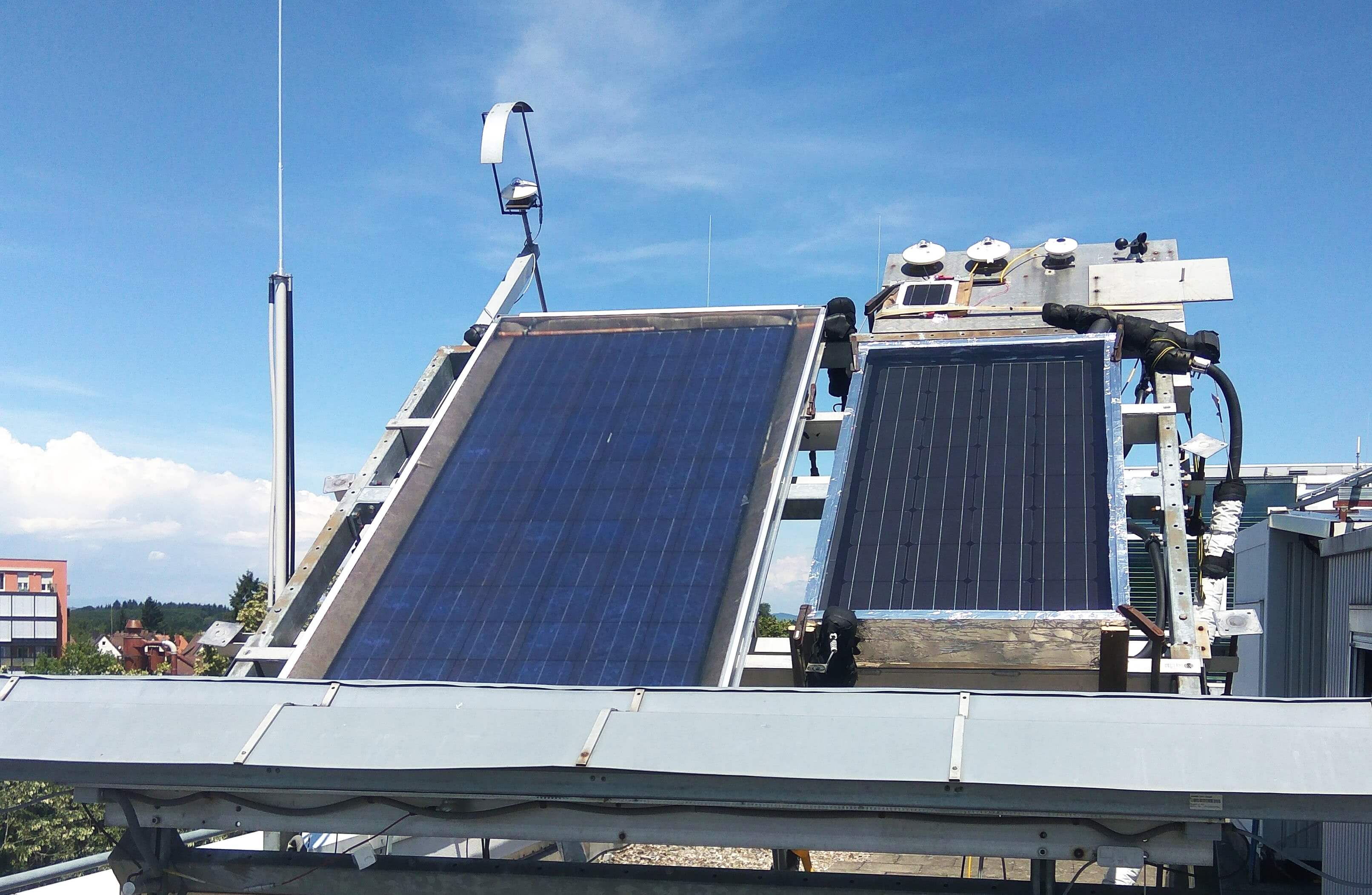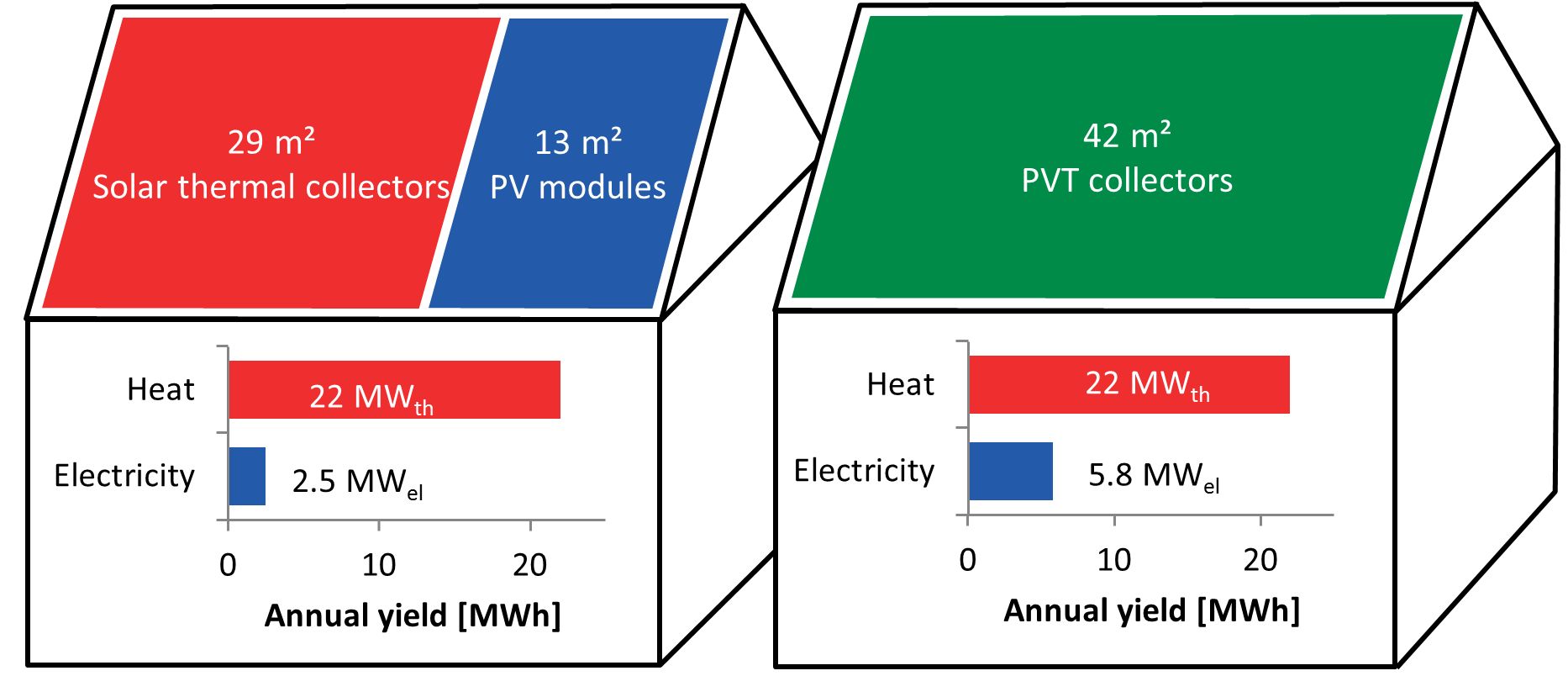| Duration: | May 2013 - October 2016 |
| Contracting Authority/ Sponsors: | German Federal Ministry of Economic Affairs and Energy (BMWi) |
| Project Partners: | Solvis GmbH |
| Project Focus: |
PVTgen2 – Optimized PVT Collectors for Combined Electricity and Heat Generation


Hybrid PVT collectors simultaneously generate solar electricity and heat in a single component. PV modules feature typical efficiencies between 15 and 20 %. Hence, it is promising to transfer the unused fraction of solar radiation as heat a fluid and thus heat water or buildings. This allows a better utilization of limited solar areas by harvesting more solar energy. However, available PVT collectors do not provide satisfactory thermal efficiency. With the use of low-emissivity coatings, Fraunhofer ISE was able to optimize the thermal efficiency so that glazed PVT collectors are suitable for common solar thermal applications, such as water and room heating.
The combination of photovoltaics and solar thermal into one component is an exciting technological challenge. With the institute’s bundled competencies in collector development, module production, service life analysis as well as the affiliated test labs, Fraunhofer ISE is well prepared for the development of PVT collectors.
A good thermal coupling of the PV cell to the fluid is of central importance to ensure low temperatures of the PV cells. Low-emissivity coatings must be optimized in such a way that they feature a high optical transmittance for a high PV efficiency as well as a low emissivity for a high thermal efficiency. High temperatures in stagnation can be avoided by either an overheating protection or adapted materials. Moreover, PVT collectors, the solar thermal system, and building integration must be matched to utilize the whole potential of this technology.
Together with an industry partner, Fraunhofer ISE developed overall PVT solutions, which achieve a significant increase in efficiency and thus a better utilization of the available areas. Modelling results for a demo building show that up to 130 % more electricity can be generated for a certain available roof area while maintaining the same thermal yield, compared to a separate installation of solar thermal collectors and PV modules.